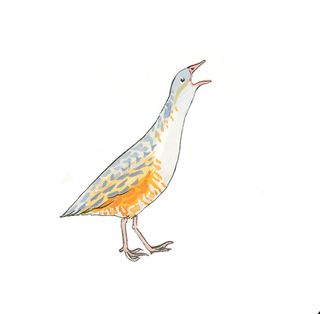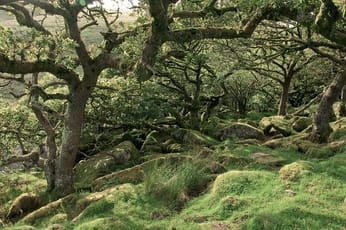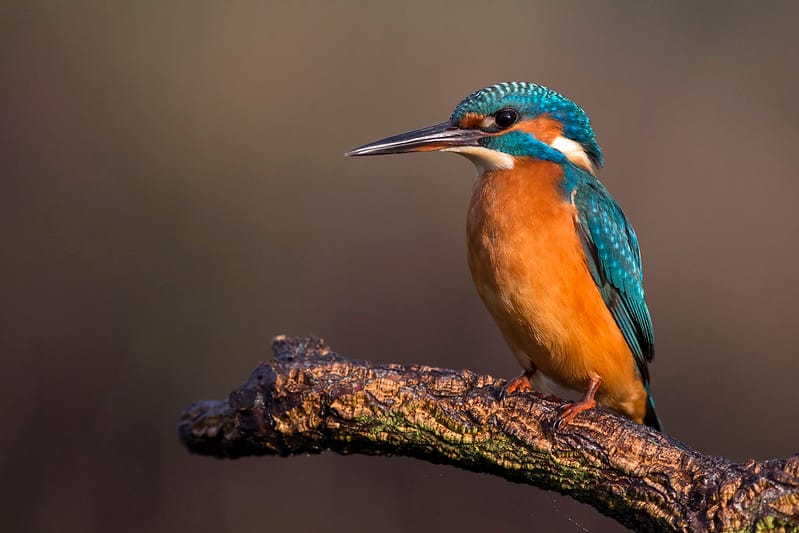
The weekly digest: Manifesto Special
The latest news on nature and conservation in Britain.
Today’s newsletter has a special focus on the party manifestos. We felt this might be particularly useful ahead of the general election, and so we are making it freely available to read. You can subscribe now to receive this digest every week.
The @inkcapjournal is the most brilliant, go-to, one-stop-shop for all your wildlife conservation news, thoughts & ideas. Do subscribe & support if you can, we need it! Its content, reach, digest & signposting is a powerful tool in the fight for nature. https://t.co/fFShDzQzce
— Nicola Chester (@nicolawriting) June 7, 2024
National news
Conservative | The Conservative Party has launched its manifesto ahead of the general election on 4th July. In it, Rishi Sunak pledges ‘a clear plan and bold action’ to secure the future of the UK, but what does this mean for the environment? Sunak is sticking to most of the Conservative’s previous environmental commitments, including the goal of reaching net zero by 2050, but the emphasis is on keeping the cost down – or what Sunak terms ‘unaffordable eco-zealotry’. This means no new green levies or charges under the Tories. So what’s new? In good news, the party has committed to retaining the ELM schemes to support nature-friendly farming, and also promised to protect more ‘blue belt’ through MPAs, support more woodland creation, and continue support for the Nature for Climate Fund. They have pledged to raise the budget for farming subsidies by £1bn over the next parliament – but this is earmarked for domestic food production, not ELMS, and is far lower than the amount for which countryside groups have campaigned. Otherwise, the manifesto pledges to ‘improve’ the Environment Agency and Natural England’s accountability – a move which some have interpreted as an attack on the regulators. It also commits to reforming the Climate Change Committee and axing the nutrient neutrality rules. The Wildlife Trusts responded to the manifesto by pointing out that, while many commitments remain the same, much of the language has weakened and does not reflect the urgency of action required. ‘This isn’t eco-zealotry; it is essential and pragmatic,’ they write. The BBC and ENDS covered the news, and Carbon Brief has a thorough database of environmental manifesto commitments.
Labour | With polls strongly predicting Labour will take power in July, how does their manifesto compare on environmental fronts? The party announced a raft of nature policies last week as part of its ‘countryside protection plan’, which were generally welcomed as a ‘significant step forward’. These include plans to plant three new national forests, stop the use of bee-harming pesticides, and introduce a ‘community right to buy’ to help locals purchase land to transform into spaces for nature. Labour also pledged action to promote regenerative farming, make National Parks ‘wilder and greener’, and improve access to green space by embedding nature into the planning system for new towns and house building. CPRE said the measures were a ‘step in the right direction’ for the countryside, while the Wildlife Trusts called the plans ‘a welcome start’. On access, the party said it would create nine national river walks in England – but this pledge has been criticised by access campaigners, who say it is a poor replacement for a Right to Roam, which Labour previously said it would introduce in England. The manifesto also includes a pledge to tackle ‘unforgivable’ river and sea pollution, but makes no mention of agricultural pollution. The party has said it will borrow £3.5bn per year to fund its green policies, although it is unclear how this will be split between energy, climate and nature. The Guardian covered the news, while Ruth Chambers summarised the manifesto’s nature policies on X. An opinion piece in the Byline Times argues that Labour should revisit its £28bn green pledge.
Others | The Conservatives and Labour manifestos might have dominated mainstream debates, but other major parties are making a splash with their plans to transform environmental policy. In their manifesto, the Liberal Democrats promised ‘bold, urgent action’ to reach net zero by 2045, and published a detailed plan for restoring nature. ENDS identified more than 70 key promises for the environment in the manifesto, setting a ‘high bar for action’, according to green groups. These include tackling sewage pollution in waterways, implementing a ‘Wildbelt’ designation to protect recovering land, and increasing the budget for sustainable and nature-friendly farming by an extra £1bn per year. The Lib Dems also pledged to create three new National Parks in England, and turn current parks into ‘National Nature Parks’ through an annual spending commitment of £50m. Meanwhile, the Green Party’s manifesto promised to be ‘more ambitious than any other party’ and ‘bring nature back to life’. The stand-out commitments include a Rights of Nature Act (a legal framework which recognises the intrinsic rights of nature), a Right to Roam Act in England, and a pledge to almost triple the financial support for farmers to transition to nature-friendly farming. The manifesto is also the only one to explicitly call out the food system as the ‘greatest driver of nature loss and pollution in our rivers’, and emphasise the need to transform it through reduced pesticides and improved soil health, among other measures. On X, campaigner Guy Shrubsole commented that ‘it may not be surprising that the Greens have excellent policies on nature’, but they deserve ‘huge credit’ for the set of bold proposals. The Wildlife Trusts responded to both manifestos positively, here and here.
In other news:
- A coalition of more than 80 conservation organisations has launched a legal bid against the government due to its failure to meet wildlife recovery targets. The BBC covered the news.
- Meanwhile, an open letter signed by 408 members of the UK’s climate science community urges all parties to commit to an ‘ambitious’ programme of climate policies, reports the BBC.
- A YouGov poll has found that 8 in 10 British adults support a ban on bottom-trawling in marine protected areas, reports the Independent.
- A study has found toxic ‘forever’ chemicals in the hair and blood of 17 politicians and environmental leaders, demonstrating the extent of their presence. The Independent and the Telegraph reported the news.
Across the country
Highlands | Since August, a team of 80 volunteers has been working on a project by Trees for Life and Woodland Trust Scotland to increase the country’s availability of rare native tree seeds. In the first season of the three-year project, they collected 2.2 million seeds from woodlands; the project is focusing rare trees in surviving fragments of ancient woodland across Skye, the Western Isles, Orkney, and the west coast temperate rainforest. Many of the tree species date back genetically to the end of the last Ice Age: by collecting the seeds, rewilding projects are able to preserve this heritage and restore native habitats where natural regeneration is not possible. The seeds collected will be available for planting as young trees this autumn, at sites including Woodland Trust rainforest and Caledonian pinewoods.
Exmoor | Conservationists attempting to save one of the UK’s most endangered butterflies have enlisted the help of pigs and cattle. The distribution of the high brown fritillary has declined by 87% in the UK since 1978, and it is now found at only three sites in England. At one of those locations, a National Trust site in Exmoor, a project by Butterfly Conservation is bringing curly-haired Mangalitsa pigs and longhorn cattle to help create their ideal habitat. This involves the hardy breeds acting as ‘living lawnmowers’, chomping on shrubs to make space for delicate common dog-violets, the sole source of food for the fritillary caterpillars. The team is also undertaking woodland work, including pollarding and ringbarking, to diversify the woody monoculture, which is a legacy of oak timber production. The Courier reported the news.
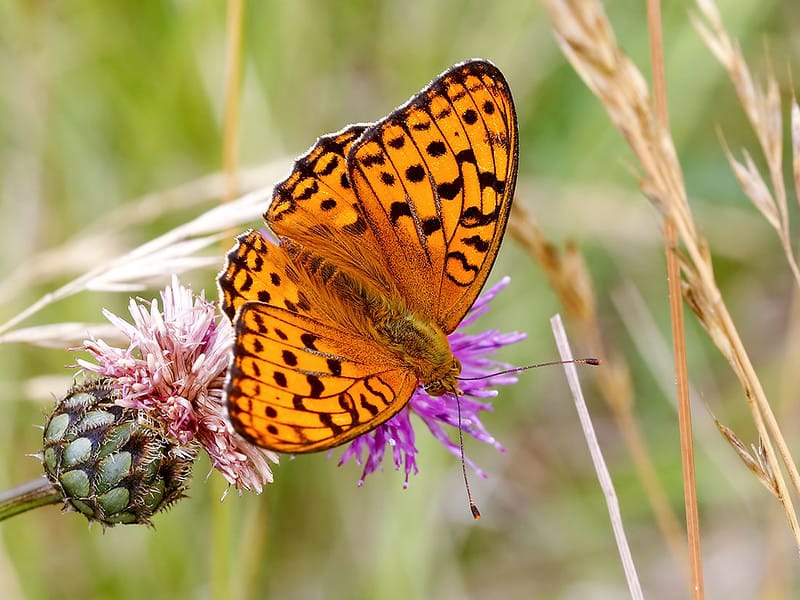
Hebrides | A campaign has been launched to secure the future of the Eriskay pony, a striking breed once common throughout the Western isles. Of middling size, the ponies were used on almost every croft to carry baskets of peat and harvested seaweed. Their numbers began to decline, however, when other breeds and then tractors replaced them; by the early 1970s, only 20 remained. Their population is now at around 400, but the Eriskay Pony Society says more help is needed to ensure the breed’s survival. The society is working with the Rare Breeds Survival Trust and genetic experts to identify suitable matches for breeding. Steve McMinn of the society said that increasing numbers is a slow process: ‘With such a small population there is a risk of increasing the inbreeding.’ The BBC reported the news.
Elsewhere:
- Golden eagle recovery is continuing in southern Scotland, after a NatureScot licence allowed for the transportation of eight birds from the Outer Hebrides in 2023 and 2024, bringing the total population to 47, reports BirdGuides.
- The National Trust is using a helicopter to protect and expand peat wetlands at Blea Tarn in the Lake District, by dropping tonnes of rocks and timber to trap water flowing into the tarn, reports the BBC.
- Eight derelict dew ponds in the South Downs National Park have been restored as part of the ‘Pounds for Ponds’ initiative, reports the BBC.
- The People’s Trust for Endangered Species has released ten hazel dormice into a secret woodland location in Bedfordshire to bolster the county’s only existing population, reports the BBC.
- The Environment Agency has fined Welsh Water £90,000 for dumping too much sewage in the River Wye, reports the BBC.
- An ‘incredibly rare’ bridled tern and ‘golden puffin’ have been spotted within days of each other near Coquet Island off the Northumberland coast, reports the BBC.
- Also in Northumberland, structures discovered in the cliffs at Foxton beach are believed to be centuries-old stone fishing tanks.
- Corrimony nature reserve in the Highlands is showing signs of recovery after being devastated by a wildfire last year, reports BirdGuides.
- The Barrahormid Trust has bought half of the Tayvallich estate from Highlands Rewilding, and will use the land for local housing and nature recovery, reports the Scotsman.
- Three corncrakes were heard singing on Bardsey Island this spring, marking the first time multiple males have held territory on the island since 1956, reports BirdGuides.
- A recent survey by Kent Wildlife Trust has revealed that the critically endangered Kentish milkwort is making a comeback.
- Campaigners say that plans to build 27 space radar dishes overlooking the Pembrokeshire Coast path are ‘unacceptable’, reports the BBC.
- Efforts by a Dorset council to rewild graveyards have left families ‘unable to find graves’ amid the long grass and flowers, reports the Telegraph.
- By analysing dried seaweed, researchers have found that sewage levels in the Mersey estuary are as high as they were in the 1980s. The BBC covered the findings.
Reports
Land | Multiple party manifestos have committed to creating a Land Use Framework, but why is land use important, and how can it be influenced at scale? A report by the British Ecological Society and the Zoological Society of London explores these questions. In particular, it highlights the need to prioritise land use opportunities with multiple goals, such as productive farming which maximises benefits to biodiversity, or the inclusion of nature-friendly spaces in housing developments. Decisions must be underpinned by strong science and good data, according to the authors, while investment is needed to monitor changes at scale. Professor Bridget Emmett of BES said that policymakers must be ‘vigilant of the risks of offshoring our ecological footprint elsewhere’.
Fish | In 2022, more aquatic animals were farmed than fished for the first time in history. This is according to a report by the UN’s Food and Agriculture Organisation, examining the changes in aquatic food systems from the 1980s until 2022 (the most recent data available). It found that the global aquaculture production rose to 94.4m tons in 2022, while the total weight of aquatic animals captured in the wild fell to 91m. Experts say the milestone has been expected, as the hauls from fisheries have largely stagnated over the last three decades, while demand and consumption has steadily risen. Aquaculture has huge potential to feed and nourish the world’s growing population, according to the authors, but only if growth is sustainable. To achieve this, it must go hand in hand with measures such as safeguarding ecosystems, reducing pollution, protecting biodiversity and ensuring social equity. Read more about the findings in this interactive story, or the UN’s synopsis. The Independent covered the news.
Food | A report by the Local Food Plan, a partnership of sustainable growing organisations, explores the barriers and solutions to transforming the local food sector. The findings are based on 44 interviews with local food practitioners across the UK, including growers, wholesalers, retailers and public sector workers. The report reveals, among other barriers, that local food retailers struggle to compete with larger supermarkets, and also suffer from a lack of support for workers. On the flip side, interviewees suggested a host of ways to help grow the sector, including levelling the playing field through policy support, and investing in infrastructure such as food aggregation hubs. The partnership will now use these findings to create an Action Plan for ‘ever more vibrant and beneficial local food systems’.
Science
D-Day | A fascinating study in Wetlands examines the crucial role of wetland science in ensuring the feasibility of the D-Day invasion. Prior to the invasion, geological maps smuggled out of Paris by the French Resistance showed that the Normandy coast might be underlain by extensive peat deposits, which could destabilise the landing and – literally – bog down the troops. To address these concerns, the Combined Operations Pilotage Parties (COPP) conducted covert beach surveys to collect substrate samples. These undercover missions, and the detailed sediment analysis that followed, allowed the military to identify safe landing areas. ‘Often overlooked amid military strategies and troop movements, the study of mud proved critical to the success of the largest amphibious invasion in history,’ writes author Christian Dunn in a summary article for the Conversation.
Eels | Researchers from Cardiff University have tested a method for helping endangered eels swim upstream during their migration. Young European eels journey thousands of miles from the Sargasso Sea to Europe’s waterways, yet when they arrive they are often met with man-made physical barriers that produce high-velocity flows and impede migration. To address this, the research team tested textured tiles, which sit on the riverbed and offer the fish opportunities to rest and preserve energy as they pass upstream. The tiles allowed eels to pass upstream more often and more easily. The team hopes to work with the Environment Agency and Natural Resources Wales to add the tiles to the network of fish passage solutions and help restore eel migration routes. The findings were published in Ecological Engineering, and covered by Phys.org.
Gaming | A study in Climatic Change, entitled Geeks versus climate change, finds that gamers are more inclined towards collective climate action than non-players, including political behaviour and consumer activism. The finding held true even when the researchers accounted for age and politics; that is, that fact that most gamers are young and Democratic-leaning. The study combats the stereotype of gamers as young white men who are disconnected, or even hostile, to real-world concerns, write the authors, who also highlight that some online influencers are already engaging their followers in pro-environmental behaviours outside of games. ‘Our study suggests that it may be valuable to engage with players not only through games themselves but also through their social circles in the gaming community,’ the paper concludes.
Driftwood
Fungi | Kew Gardens are famous for their orchid-filled greenhouses and tropical trees – less well-known, however, is its enormous fungarium, featuring the largest collection of fungi anywhere in the world. In neatly stacked cardboard boxes, there are around 1.3m specimens of fruiting bodies. Their potential is being explored by scientists working in the laboratory above, including the role of mycorrhizal fungi in soil carbon sequestration. This strange room, and the science it informs, is explored and photographed in a feature in WIRED, including the somewhat bizarre fact that the archivists who work there wear mushroom hats. Lee Davies, the curator of the fungarium, says he was initially stationed at the fungarium against his will, but it has been the ‘best thing ever, I love it. It’s been a total conversion.’
Culling | The New Yorker delves into the complicated and charged issue of culling for conservation – namely, whether it is right to kill one wild species to protect another. In the UK, this is the case for many species: grey squirrels are culled to protect reds, American mink for water voles, rats for puffins, and so on. In this feature, Elizabeth Kolbert reviews ecologist and writer Hugh Warwick’s latest book, Cull of the Wild, which considers a dozen such campaigns. In 2003, Warwick was involved in an effort to rescue hedgehogs from Uist; their introduction to the islands had caused avian populations to crash and the RSPB’s solution was lethal injections for the hogs. Even so, Warwick is not opposed to killing in the name of conservation: he’s conflicted. In the book he writes: ‘There is an old saying that anyone who gives you a simple answer to a complicated problem is either a liar or a fool.’
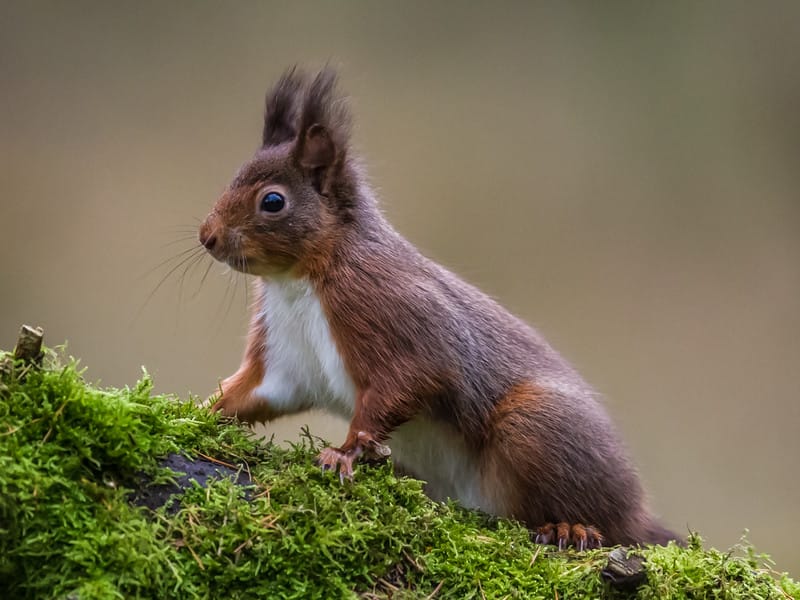
Sharks | Did you know that you can swim with sharks in British waters? The activity is becoming increasingly popular, largely due to social media, according to Patrick Barkham in a Guardian article. Off the southwest coast of England and Wales, a rising number of wet-suit clad visitors are swimming with blue sharks. The species can grow nearly four metres long, but they feed only on squid and small fish and are not a danger to humans. However, tour operators like Richard Rees, the director of Celtic Deep off the coast of Pembrokeshire, are at pains to emphasise that the sharks are not ‘like harmless puppy dogs’. Blue sharks are at risk of extinction, and some tour operators are working with researchers to test methods for repelling sharks from long-line trawlers. Others simply want to ‘paint a different picture of the marine wildlife here,’ according to Rees.
Further reading:
- A long read in the Guardian investigates the failure of the Environment Agency to prevent river pollution – and whether public outcry can turn it around.
- A survey by Plantlife found that women are more likely to allow lawns to grow wild, while men would rather keep manicured gardens. Read more in the Times.
- An article in the Scotsman investigates what it would take to transform the barren Glenprosen sporting estate in Angus into a nature-rich habitat.
- In the Scotsman, read about five landscapes in the Scottish Highlands where ‘geology made geography and geography would make history’, according to author Alistair Moffat in his book on the subject.
- A feature in Nautilus reflects on the oldest ecosystems on earth, and what they teach us about resilience.
- Following an opinion poll on their presence, Stephen Moss writes in the Guardian about how parakeets came to set up residence in Britain.
- A new superfruit is coming to the Scottish food market, thanks to the James Hutton Institute. It describes the honeyberry as a ‘blueberry on steroids’.
- An in-depth BBC analysis by climate editor Justin Rowlatt reflects on the ‘real distance’ between Sunak and Starmer on climate policy.
- For the Guardian, organic food grower and writer Claire Ratinon reflects on the difficulties of eco-friendly growing alongside slugs.
- The uninhabited island of Mullagrach in the Summer Isles is for sale, for only £500,000. Details are in the Scotsman.
- For Air Mail, author Patrick Galbraith writes about the ‘topsy-turvy battle’ between ‘green lairds’ and locals who hunt over deer stalking.
Happy days
Storks | Until four years ago, the most recent record of a wild white stork hatching in Britain dated back to 1416, when a pair nested on the roof of St Giles’ Cathedral in Edinburgh. Now, the UK’s largest bird is expecting a bumper year of chicks at its stronghold in the rewilded Knepp Estate in Sussex. A successful reintroduction project led to four chicks hatching on the estate in 2020. This year, it is hoped that more than 40 chicks will appear. ‘They’re showing us how quickly, given the chance, that nature can recover,’ said project overseer Laura Vaughan-Hirsch. The Times visited Knepp recently to see the storks in person, and this editorial explains why the population deserves to thrive.
Subscribe to our newsletter
Members receive our premium weekly digest of nature news from across Britain.
Comments
Sign in or become a Inkcap Journal member to join the conversation.
Just enter your email below to get a log in link.

